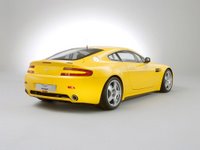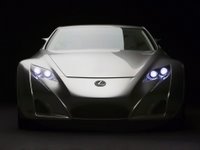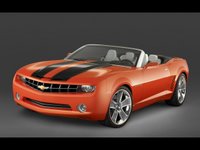Aston Martin V8 Vantage N24
 Aston Martin has confirmed details of its N24 race car, based on the critically acclaimed V8 Vantage road car, which will be showcased at the Autosport International Show this week.
Aston Martin has confirmed details of its N24 race car, based on the critically acclaimed V8 Vantage road car, which will be showcased at the Autosport International Show this week.The Vantage N24 is based on a standard European specification production V8 Vantage, with modifications undertaken to prepare the car for the competitive racing environment.
At the 2006 British Motor Show, Aston Martin Chairman and Chief Executive Officer, Dr Ulrich Bez, announced that the company would build a limited production run of cars based on the V8 Vantage that completed the Nьrburgring 24-hour endurance race that June. The near standard V8 Vantage finished 24th overall out of 220 starters, completing some 130 laps of the 15.77 mile circuit – in a field of mostly specialised race-homologated entrants.
The Nьrburgring 24-hour race not only gives its name to the V8 Vantage N24, but provided a conclusive demonstration of its abilities; a near standard car capable of tackling the demands of one of the world's most arduous racing circuits.
The Vantage N24 subsequently went on to finish eighth overall in the inaugural 24-hour race of Bahrain in December 2006, again competing with highly modified race cars. During the course of the race, the Vantage N24 covered over 2600km, needing only fuel, brake pads and tyres.
With the formation of Aston Martin Racing in 2004, the company made a long awaited and successful return to international sports car racing firstly with the GT1 DBR9 in 2005 followed by the GT3 DBRS9 in 2006. However, the company also has a long history of racing near standard cars both at national and at international level. The Vantage N24 builds on this tradition - a factory built car proven and ready to race.
The Vantage N24 will be fastidiously hand built in a dedicated facility within Aston Martin’s Gaydon headquarters. The level of detail and finish conforms to Aston Martin’s exacting standards, fusing hand craftsmanship with advanced technology. The build of the first customer cars will commence in the coming weeks.
The Vantage N24’s engine is modified to enhance throttle response and performance; including the crankshaft, conrods and pistons being lightened and balanced, the cylinder heads re-profiled to optimise compression ratio and gas flow and the engine management system is calibrated for race use.
The N24 also benefits from a free flow exhaust system and improved air filters. The standard V8 dry sump lubrication system is retained helping prevent oil surges during extreme cornering. The result is 410bhp (305KW) at 7500rpm – a 30bhp increase over the standard car.
The N24 is available with a 6-speed manual transmission only. A Valeo twin plate cerametalic racing clutch and lightweight flywheel complete the powertrain specification.
At 1330kg the Vantage N24 weighs in at 250kg lighter than the standard car. The interior trim of the standard car is removed apart from the facia moulding which is re-trimmed in Alcantara. The console and door casings are replaced by new lightweight mouldings. The air-conditioning system is removed as are the airbags. The interior features a full high strength steel roll cage and Recaro Pole Position competition shell (a passenger seat and safety harness is an optional extra). A suede-trimmed steering wheel with a quick release mechanism is also fitted as standard. The Vantage N24’s safety features are completed with a Schroth six-point safety harness with a push button release and Lifeline Zero 360 gas extinguisher system.
The Vantage N24's underframe and body has also been discreetly modified to save weight and increase trackside practicality. Tapping plates have been included to accommodate the use of pneumatic jacks, and motor sport towing eyes are attached to the chassis. The side and rear windows have been replaced with clear polycarbonate, with a sliding opening on the driver's side. The bonnet and tail latches are now quick release items.
The V8 Vantage’s acclaimed suspension has required only minor adjustments to optimise it for track use. These include larger diameter front and rear anti-roll bars and adjustable ride height aluminium dampers, as well as single rate flat ground springs with separate helper springs. The front subframe has been modified for extra camber and castor, while Speedline cast magnesium front and rear wheels are standard, along with high performance Yokohama AO48 tyres.
The brakes have been up-rated with Pagid RS 29 race pads. As further endorsement of the standard V8 Vantage’s abilities, the active safety systems are directly carried over to the Vantage N24 including dynamic stability control, traction control, ABS and electronic brakeforce distribution, providing reassurance and control in slippery conditions.
The Vantage N24 provides an ideal base for a wide variety of Motorsport uses and is ideal for club racing amongst other categories. As supplied it is eligible for series such as the VLN Endurance Championship at the Nьrburgring, the Britcar endurance series, the Dutch Supercar Challenge, the Australian GT Championship and the European Endurance Championship. In addition, the Vantage N24 is also potentially eligible for the proposed European GT4 series, the Grand-Am Cup and SCCA Touring Car Class in the USA.
The Vantage N24 is on sale now with prices starting at Ј78,720 plus local taxes and delivery. The customer version of the N24 will make its public debut at the Autosport International Show at the Birmingham NEC from 11th January, as a guest car on tyre partner, Yokohama’s, stand.




 The LF-A sports-car concept was originally shown at the 2005 NAIAS to express a bold new direction in styling for the Lexus brand. The goals for the new LF-A are no different than they were with the original concept: To build a supercar with world-class performance that is uniquely Lexus.
The LF-A sports-car concept was originally shown at the 2005 NAIAS to express a bold new direction in styling for the Lexus brand. The goals for the new LF-A are no different than they were with the original concept: To build a supercar with world-class performance that is uniquely Lexus.



 The Chevrolet Camaro concept was the celebrated star of the 2006 auto show season. You can only top that by literally and figuratively blowing the top off. That’s exactly what GM’s designers and engineers did to create the Camaro convertible concept. The introduction of the Camaro convertible concept was on the eve of the North American International Auto Show at GM Style, an exclusive, fashion-splashed event combining celebrities, couture and automobiles.
The Chevrolet Camaro concept was the celebrated star of the 2006 auto show season. You can only top that by literally and figuratively blowing the top off. That’s exactly what GM’s designers and engineers did to create the Camaro convertible concept. The introduction of the Camaro convertible concept was on the eve of the North American International Auto Show at GM Style, an exclusive, fashion-splashed event combining celebrities, couture and automobiles.





